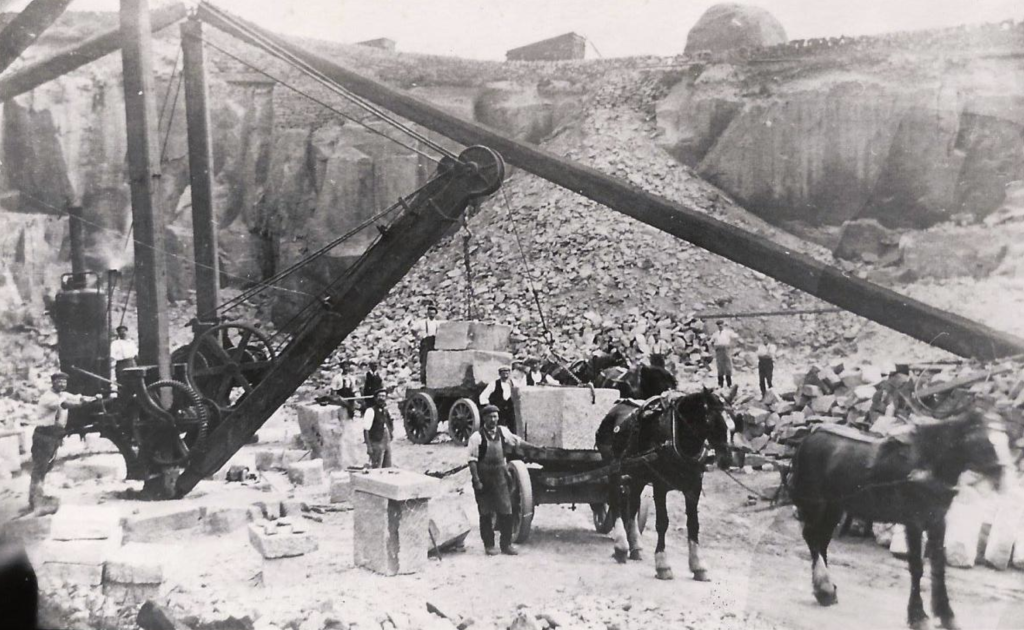STONE FLAGS
Flags on the floor of the building
Stone is a prominent feature of the upper Calder valley landscape and its prominence and importance is reflected in the architecture of the chapel.
Stone is a foundation on which things are built: a building, a belief, a community. Stone is a motif for a community that has stood the test of time, that has weathered the elements and represents the grit of the individuals who worshipped here.
The pulpit, the foundations, the walls, the gravestones. All made from stone.
The Building’s History
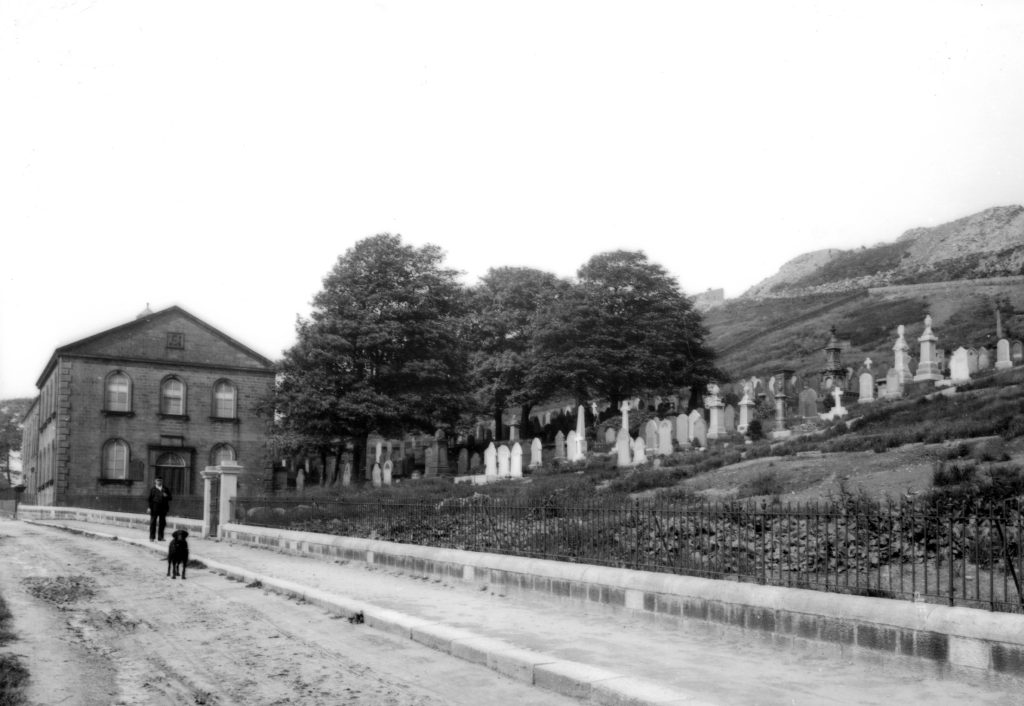
The present chapel (built 1859-1860) is constructed of local hammer built sandstone with ashlar dressings and a welsh slate roof. There is a possibility that some of the third chapel that we see standing today reuses materials from the 1806 chapel and manse. Certainly our flagstones look like they may have stood the test of time and may possibly have been used in the chapel prior to the 1859-1860 rebuild.
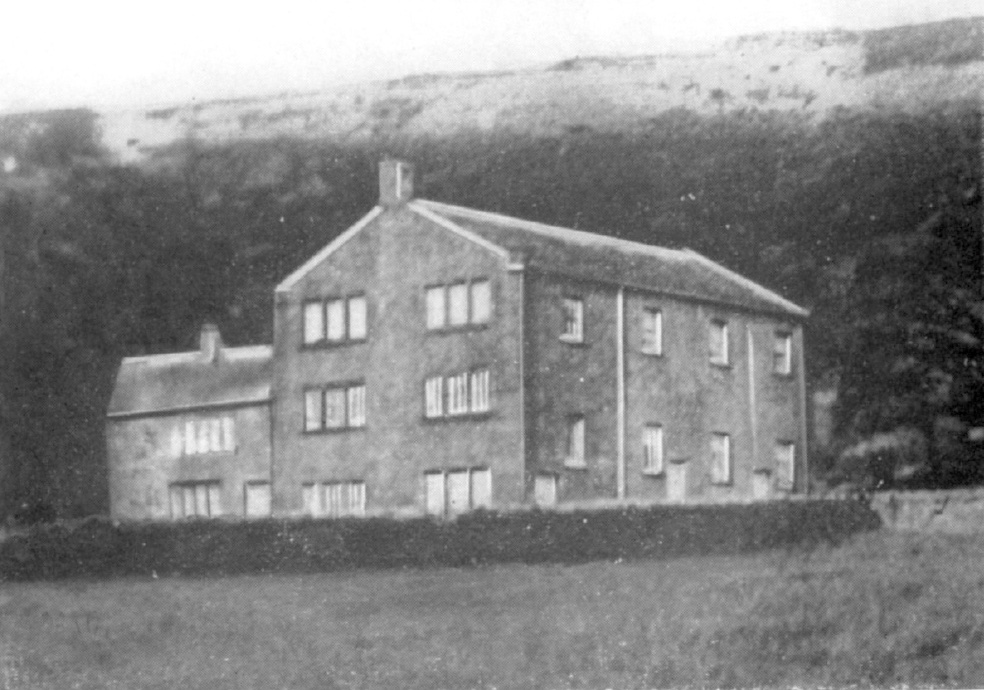
Photo from Hebden Bridge Local History Society: The second chapel with its attached manse. Could it be that our flagstones remained in situ through the third rebuild?
We shape our buildings and thereafter they shape us
George Bowers writes: ‘The two types of stone used in Calderdale were the Elland flag stones, which split easily and provided most of the roof slate, as well as the highly prized ashlar stone which often fronted buildings, and the millstone grit used for most buildings in Hebden Bridge. Both are tough and long-lasting, withstanding the effects of weather and pollution.’
To find out more about quarrying in the local area with information by George Bowers, CLICK ON THE PHOTO ABOVE
“There is life in a stone. Any stone that sits in a field or lies on a beach takes on the memory of that place. You can feel that stones have witnessed so many things.”
Andy Goldsworthy
Click on the photo of the Bridestones above to find out more about the geology of Calderdale
Building the Chapel – the dream, a reality.
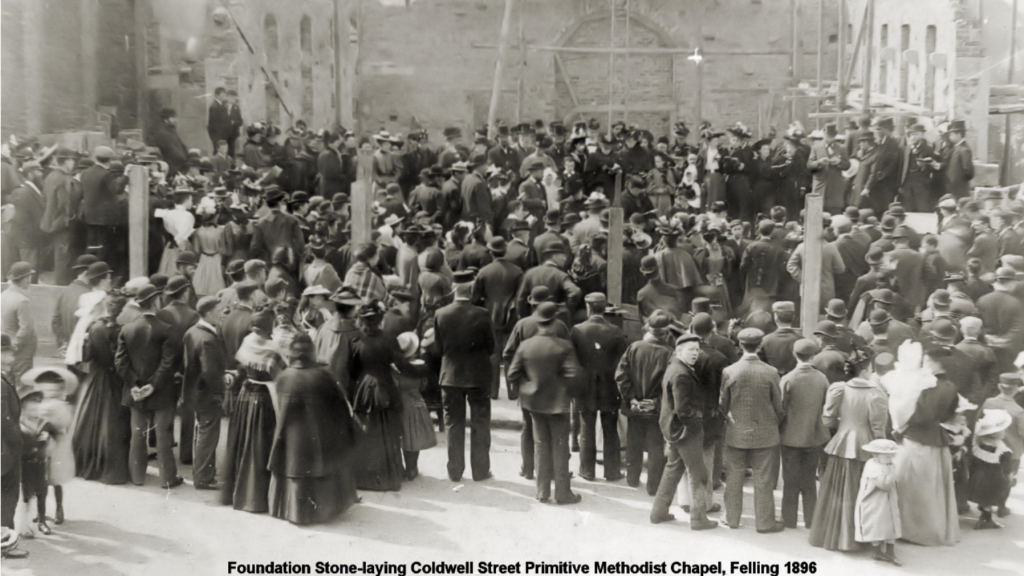
Wainsgate Chapel was first established through local subscription in 1750. A farmer donated the land that included land for both the burial ground and ministers house. The original chapel would have held around 100 people
It was reported that the ceiling of the 1750 chapel was too low, so the congregation went about digging out the floor by about 18 inches which made it extremely damp. Digging the floor out to increase its height meant that the building was then prone to severe flooding.
The establishment of many of the non-conformist chapels in the area were funded by the congregation. Stone laying ceremonies were common as fundraisers and usually a prominent businessman laid the first stone. The congregation would gather for the event and donate money which would then be used towards the building of the chapel. An example of such a ceremony (although not local) can be seen in the image below.
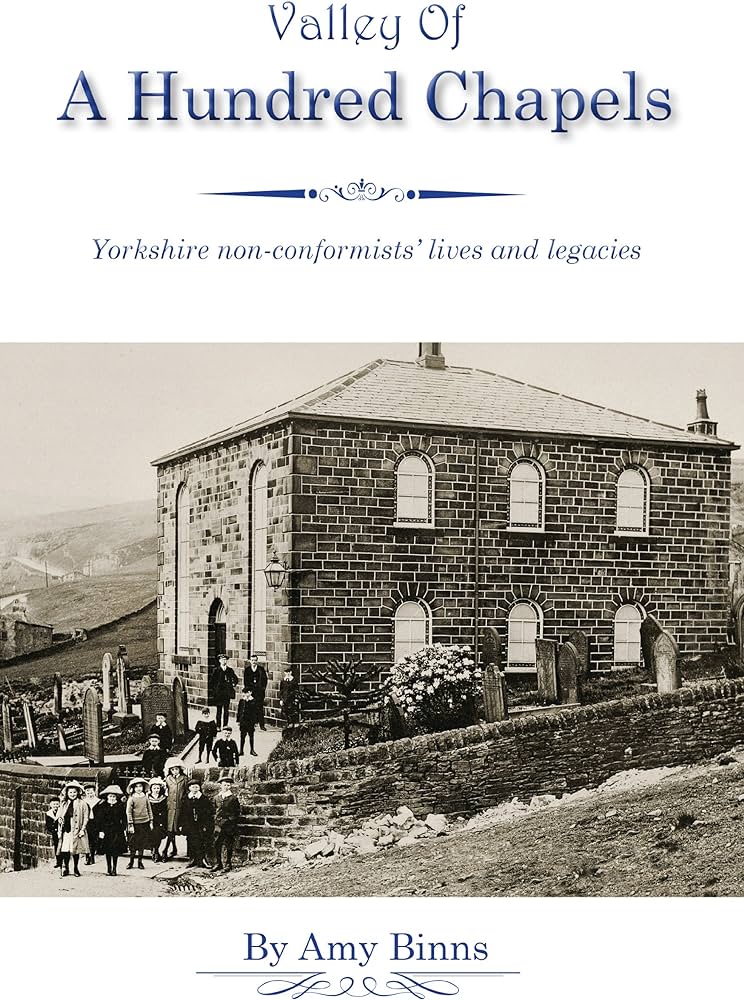
At Wainsgate, the final rebuild of the chapel seems to have been paid in its entirety through subscription from the congregation. Could it be possible that a stone laying ceremony or something similar took place when the first chapel was built in order to raise funds?
Photographic evidence of a stone laying ceremony on Foster Lane can be found here alongside a wealth of information about the chapels in the valley: Valley of a Hundred Chapels: Amy Binns

The ‘New Chapel’
It is possible that this floor was laid sometime in the twenty-three year ministry (1855-1878) of John Bamber who undertook the rebuilding of the chapel and the school to give us the building that we see today. Indeed, it is also possible that the stones may have been reused from the earlier chapel and may have remained in situ, but that is something for which we have no evidence.
The Source below is an extract from The British Newspaper Archive which details the opening of the ‘new chapel.’ It is interesting to not that the entire rebuild was paid for by the congregation proving the importance of the chapel to its community. Finding the funds for the rebuild must have been no mean feat.
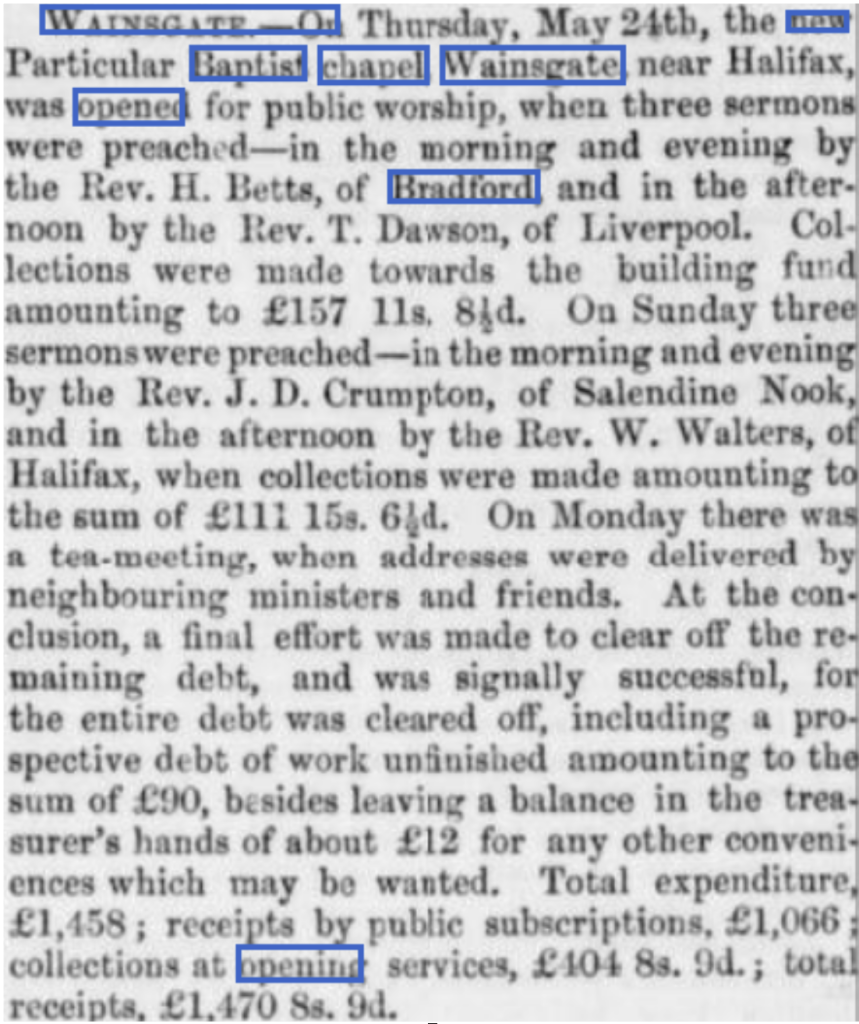
Newspaper listing detailing amounts collected towards the debt incurred in the building of the new chapel.

